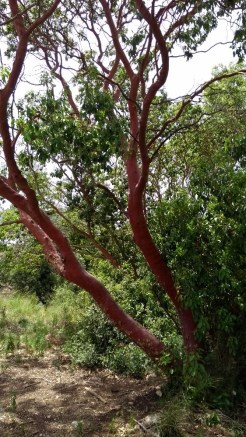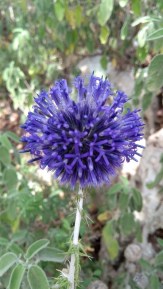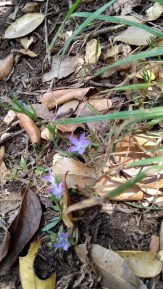Hiking in Mediterranean woodland around Mount Carmel (2)
- friendsjbg
- May 31, 2018
- 2 min read
Updated: May 27
In the second part of her blog about a recent visit to the Yagur Reserve near Mount Carmel, Worms Travel Bursary recipient, Olivia – a final year Kew Diploma student in the UK – completes her report.
My walk took me through beautiful, dense (but dwarf) forest, which opened into small clearings of shrubby or steppe vegetation. I zigzagged up and down hillsides, looking at the changes in vegetation, but almost always surrounded by the smell of salvia in heat of the sun.
I loved the habit of the low growing trees, whose reduced height and small, waxy, evergreen leaves are adaptations to the climate: helping them to conserve water in the dry hot summer and allowing them to continue to photosynthesise when more water is available in the wetter winter months.
One of the most striking trees, was Arbutus andrachne. The bright red bark was stunning when it was illuminated by sunlight, especially when it was flaking to reveal the greeny-yellow of the young bark underneath.

Arbutus andrachne

Arbutus andrachne
Although it wasn’t peak season for herbaceous plants and their flowers, there were still plenty to see. The bright blue spherical inflorescences of Echinops adenocaulis were both beautiful and conspicuous in the open steppe vegetation towards the base of slopes. I was particularly taken by Cephalaria joppensis in the Scabious family (Dipsacaceae), whose tall stems reached up to about 1.5m. It often lined the path in open areas and bore a lacy white flower with bright blue anthers. I also liked the delicate pink of Dianthus strictus, which was common on dry sunny boulder slopes where it had little competition from shrubs and trees. Another plant I was pleased to find was Campanula hierosolymitana, a small creeping campanula, which I had seen growing on the limestone rocks in Jerusalem Botanical Garden.

Echinops adenocaulis

Cephalaria joppensis

Campanula hierosolymitana

Finally, I should note that, as a fern lover, I was extremely happy to seek out a fern on this walk- Asplenium ceterach. This may initially seem unexpected in a climate which is has almost no rain in summer and is extremely hot. However, Asplenium ceterach is an interesting fern because it displays desiccation tolerance. This means it can lose almost all of the water content of its cells (down to 4-7%,) shrivel into a dry brown mass, suspend photosynthesis and metabolic activity and then resurrect again when water arrives. This is in contrast to ‘normal’ vascular plant cells which die when water content goes below about 30%. The images below capture this phenomenon well.





Comments